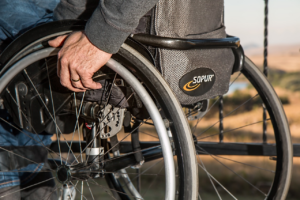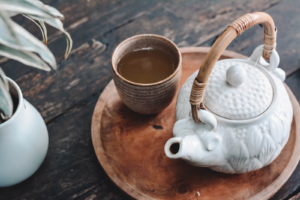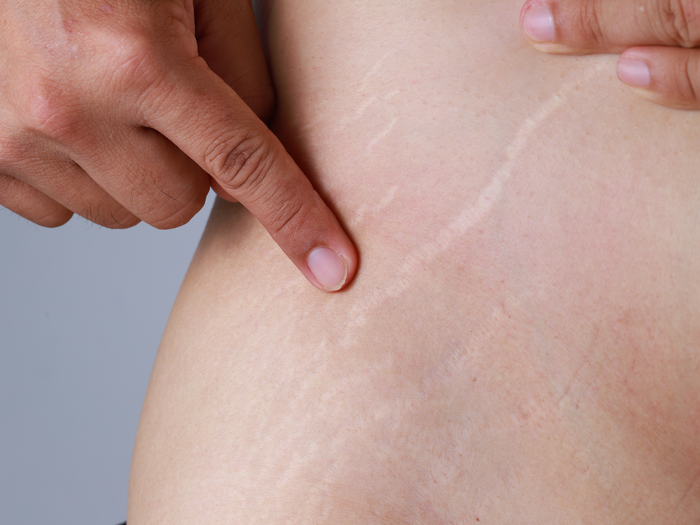
Introduction to Cellulite and Stretch Marks
Cellulite is a widespread aesthetic condition that affects people of all ages and body types, primarily women. It is distinguished by the skin’s dimpled or lumpy appearance, which is frequently compared to the texture of an orange peel. Contrary to common opinion, cellulite is not only caused by extra body fat; it is a complicated disorder influenced by several factors, including genetics, hormone fluctuations, and the shape of connective tissue beneath the skin.
Stretch marks, also known medically as striae, are another frequent skin issue shared by men and women. They show on the skin’s surface as narrow streaks or lines ranging from pale pink to dark brown. Stretch marks appear when the skin is stretched or grows rapidly, resulting from pregnancy, fast weight gain or loss, puberty, or certain medical disorders. The quick stretching tears the middle layer of the skin (dermis), leaving behind the distinctive markings. They are most typically found on body parts prone to expansion, such as the abdomen, breasts, thighs, hips, and upper arms. While stretch marks are not hazardous, they can cause cosmetic anguish for many people.
Commonalities and Distinctions
Cellulite and stretch marks share similarities in that they both involve alterations in the skin’s appearance and texture. Genetics, hormonal fluctuations, and rapid changes in body composition also influence them. However, they differ in their visual presentation and underlying causes. A dimpled texture characterizes cellulite and is primarily related to the structure of underlying connective tissue, while stretch marks appear as streaks or lines and result from the stretching of the skin.
Despite being common occurrences, both cellulite and stretch marks on thighs can significantly impact one’s self-esteem and body image. Many individuals seek treatments and interventions to reduce their visibility or prevent occurrence. It is important to remember that while these imperfections may be aesthetically undesirable for some, they are a natural part of the body’s response to growth, changes, and aging. Embracing one’s unique physicality and seeking professional advice for treatment options can help individuals navigate these common skin concerns with confidence and self-assurance.
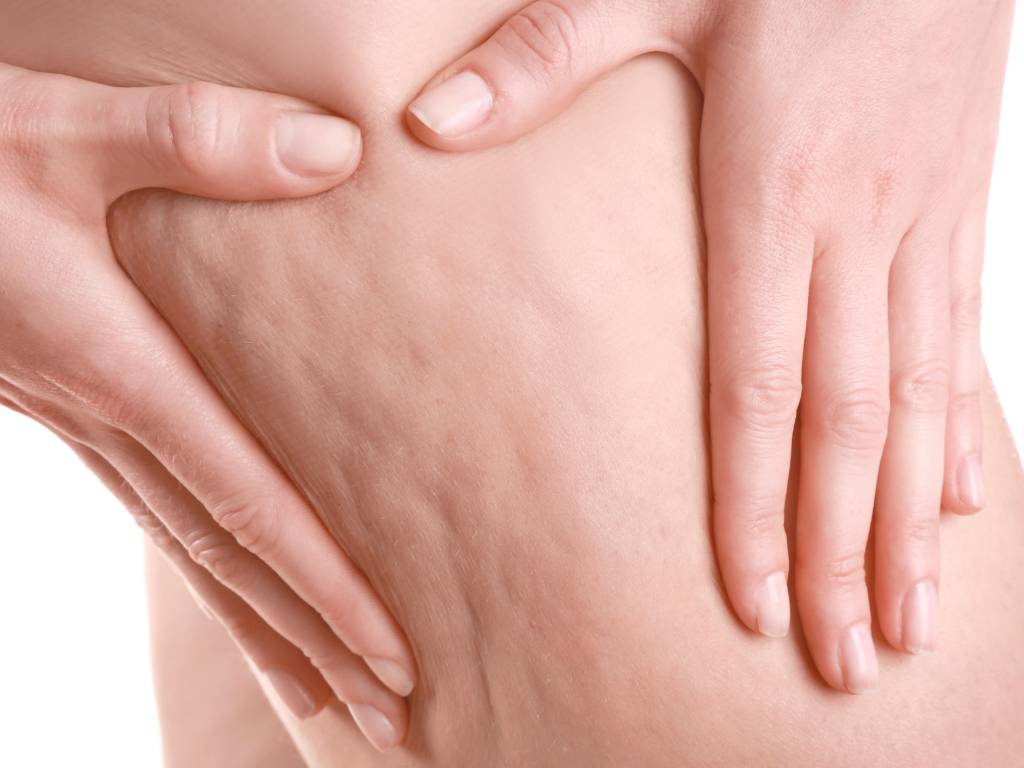
Natural Remedies for Reducing the Appearance of Cellulite and Stretch Marks
Natural Remedies for Reducing Cellulite
- Dry brushing: Brushing the skin lightly with a natural bristle brush to promote circulation and lymphatic movement. Over time, it may reduce the appearance of cellulite.
- Coffee Scrub: Caffeine is thought to tighten and tone the skin temporarily. Cellulite can be reduced by combining coffee grinds with a carrier oil and kneading it into the afflicted regions.
- Gelatin and bone broth: These collagen-rich foods can help improve skin elasticity and health. Consuming them regularly reduces the visibility of cellulite.
Natural Remedies for Reducing Stretch Marks
- Aloe Vera: Aloe vera gel, known for its soothing and healing characteristics, can be used directly to stretch marks. It may help moisturize and soothe the skin.
- Vitamin E Oil: Vitamin E has skin-nourishing qualities. Applying vitamin E oil to stretch marks may help them fade over time.
- Lemon Juice: Lemon juice’s natural acids can exfoliate the skin and increase cell turnover. Applying freshly squeezed lemon juice to stretch marks (while avoiding direct sunlight) may help lessen them.
Understanding the Biology Behind Cellulite and Stretch Marks;
Biology of Cellulite
Cellulite on legs is a complicated skin disorder that is regulated by a variety of biological factors. It is primarily caused by subcutaneous tissue, which is located beneath the skin’s surface. A network of connective tissue made up of collagen fibres maintains the skin in place inside this layer. This connective tissue may be structured in persons with cellulite so that fat cells protrude, providing the typical dimpled appearance.
Hormones are also important in the production of cellulite. This hormone affects fat distribution in the body, encouraging fat deposition in places such as the thighs, buttocks, and belly, which are common sites for cellulite. Furthermore, blood flow and lymphatic drainage are essential.
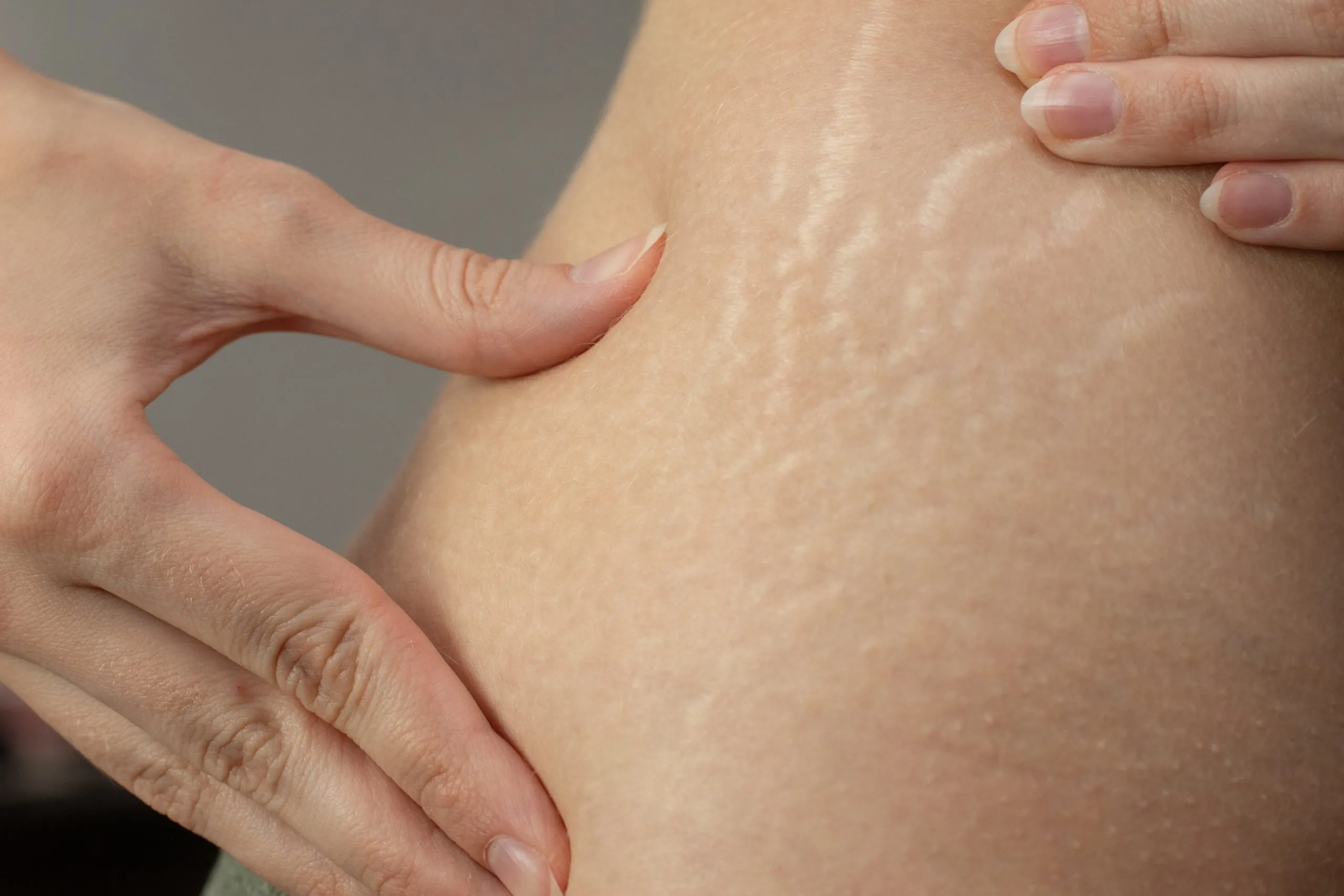
Biology of Stretch Marks
Stretch marks, or striae, are caused by the dermis, the skin’s main layer. The dermis is made up of collagen and elastin fibres, which provide the skin flexibility and support. When the skin stretches or grows rapidly, as is common during pregnancy, puberty, or significant weight fluctuations, these fibers can get overstretched and tear.
As a result, the dermis undergoes structural changes, resulting in the production of stretch marks. They seem crimson or purplish initially because blood vessels are visible through the injured skin. They tend to fade and take on a lighter, silvery aspect over time.
Genetics also have a factor in a person’s vulnerability to stretch marks. Some people are genetically predisposed to certain diseases.
Conclusion
Finally, cellulite and stretch marks are frequent skin issues that influence people’s confidence and body image. Understanding these disorders’ biology helps explain why they occur and how they manifest. Various causes, including connective tissue structure, hormonal impacts, and circulation difficulties, cause cellulite. Stretch marks, on the other hand, are caused by the stretching of the skin’s dermal layer, which is frequently caused by rapid development or weight changes, and they can be impacted by heredity.
While natural therapies might provide some relief and improvement, they must be used with realistic expectations and regularity. Dry brushing, coffee scrubs, and essential oils can all help to minimise the appearance of cellulite.


